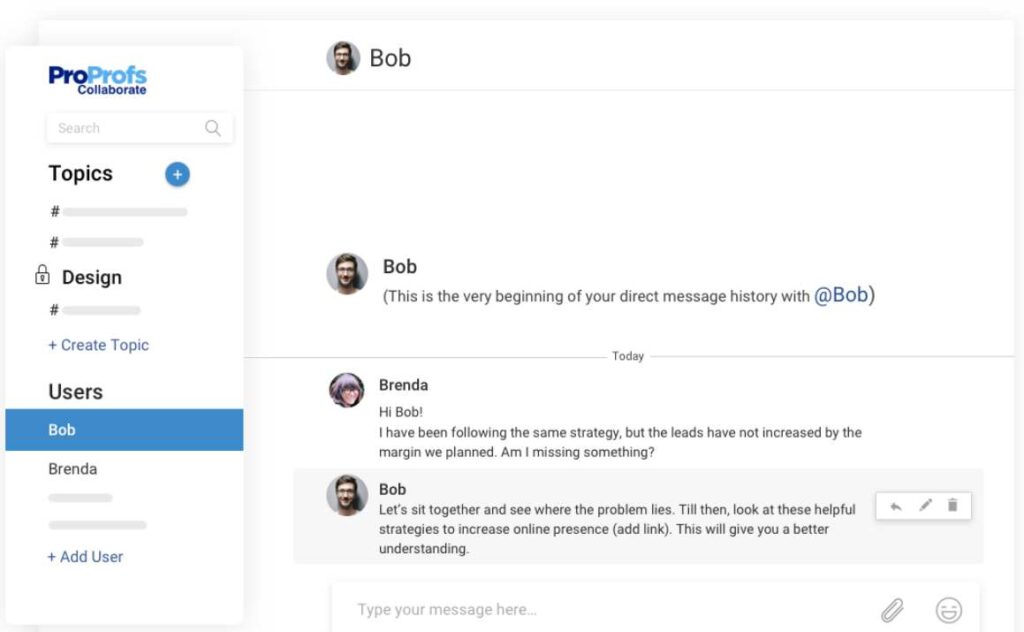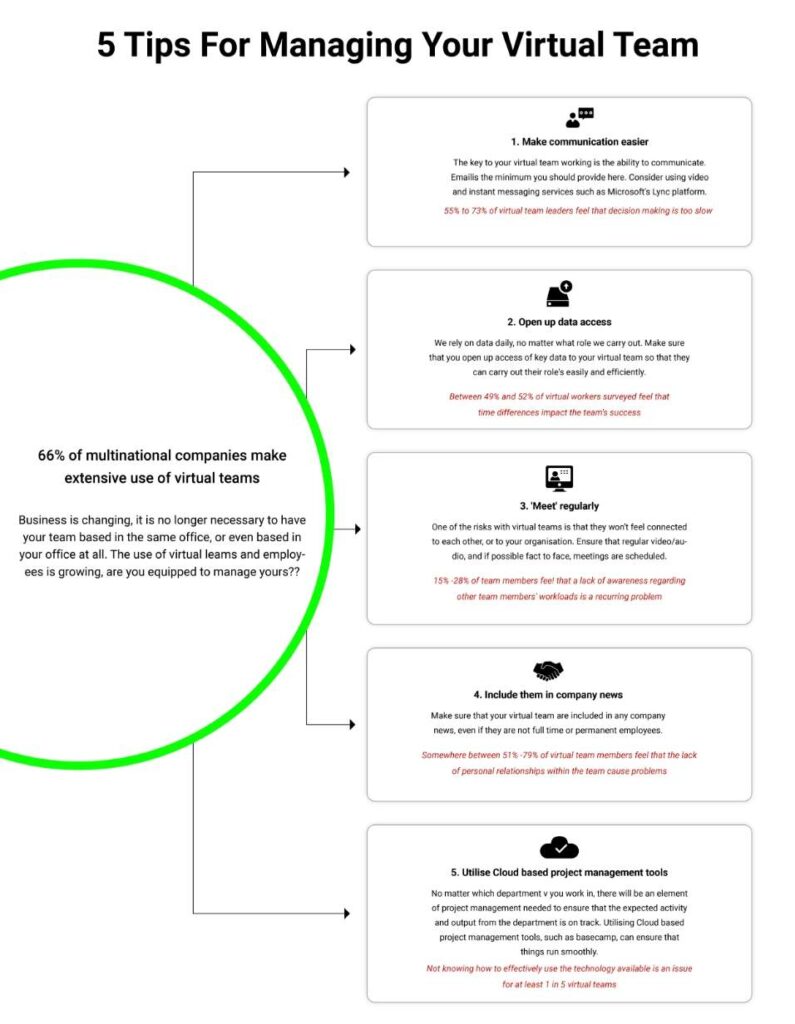In 2013, entrepreneur and founder of the Virgin Group, Richard Branson, voiced his disagreement with the decision of Marissa Mayer, then Yahoo CEO, to ban employees from working from home. He said, “One day, offices will be a thing of the past.”
It seems it’s beginning to come true.
Virtual workplaces, either local or remote, are a reality today and no longer just a prediction. Until the recent pandemic, they were seen as a futuristic trend.
But the future is already here. And it has given rise to several virtual team challenges as well.
Since 2005, there’s been an increase of 140% in the number of people working from home.
Nowadays, companies are operating either in a fully remote or hybrid environment.
According to Forbes, this technology-enabled and location-independent work trend is giving rise to digital nomads who travel and work remotely.
Virtual teams provide many advantages over the traditional co-location system.
- Access to talent regardless of the location
- Computing infrastructure in the cloud
- Better work-life balance
- More loyalty due to flexibility
- 24/7 business operation
- Greater productivity
- Cost-saving
That said, the challenges of managing virtual teams are also many. The top ones that companies often face relate to collaboration across different time zones, communication gaps, building relationships, and lack of team engagement and responsiveness.
This blog post looks at 10 such challenges and the effective ways to tackle them using the right tools, strategies, resources, and support. This is aimed at helping you remove all the bottlenecks in managing virtual employees and build successful teams.
Continue reading to find out.
10 Virtual Team Challenges and Their Solutions
“We develop our character muscles by overcoming challenges and obstacles.” – Stephen Covey
Check out these demanding situations that generally accompany a virtual team setup, and find out how to address them.
1. Communication Issues
Almost all businesses rate communication issues as the top challenge facing them vis-à-vis managing a virtual team. Unlike physical offices, there are no in-person, informal conversations and non-verbal cues.
Sometimes, virtual teams remain without contact for days, which can make them feel isolated.
In addition to a lack of communication, the chances of miscommunication are high while working with a virtual team.
What You Can Do
Thankfully, there are now many powerful communication channels that you can use to overcome virtual team communication challenges.
- Platforms such as virtual classrooms, video conferencing, collaboration platforms, digital whiteboards, and screen sharing can help bridge the communication gap.
- They ensure transparency in communication and break down complex ideas.
- Before you start working with a virtual team, make it your priority to deploy as many of these tools as possible.
- Along with this, hiring the right people with excellent communication skills can make it a lot easier for you.
- Also, promote a culture of communication in your teams. Encourage open communication and make yourself accessible at any time.
Training people on good communication can go a long way in solving many issues like project roadblocks, every day conflicts and more.

2. Absence of Social Interaction
Another challenge of working in virtual teams is the lack of real social interaction. Team members like to interact with each other no matter where they are. They enjoy talking casually about their work, personal life, hobbies, and so on.
When work becomes demanding and stressful, employees tend to turn to their colleagues for some relief. Those water cooler chats and conversations during tea or lunch breaks are a regular part of daily work life.
Virtual workspaces lack this kind of face time or person-to-person interaction except for video calls, which are far from relaxing.
Watch: Stress Management Training Course
What You Can Do
- Encourage your teams to exchange instant messages during free time to catch up with each other.
- You can also introduce some social time in your work calendar where the teams can interact with each other on any non-work-related topics.
- Divide the team into small groups and let them pit against each other for some rewards.
- Brain games, quizzes, and puzzles can also be an excellent way to develop bonding among your virtual teams.

You can also go for trainings like these to implement team building, trust building and supervision activities successfully:
|
|
|
|
3. Distrust
It’s not that difficult to see how working with virtual teams can eventually create trust issues. Team members can’t see what others are actually doing, they usually don’t get responses instantly, and all of them are not awake & working simultaneously.
If you don’t tackle it immediately, it can become a productivity killer over time.
What You Can Do
- Create shared goals and highlight the contributions of each member in achieving them.
- These goals can be weekly, monthly, or even quarterly.
- Motivate the team to collaborate and help each other out whenever possible.
- You can rely on a virtual team collaboration tool for this purpose.
- This will assist them in building respect for and trust in each other.
4. Cultural Differences
Now we’ve come to what looks like an unavoidable reality embedded in our DNA.
Cultural diversity is often encountered while working with a vast team with members from various cultural backgrounds. Different cultures have different languages, religious beliefs, food habits, and customs.
Sometimes, conflicts may arise out of:
- ignorance or insensitivity towards other cultures
- miscommunications between team members
- making assumptions based on cultural identity
- a lack of diversity training
In a study conducted on working with multicultural teams, there was a case wherein cultural differences between Turkish and Western managers, as well as differences in their perception, caused conflicts.
In the joint venture between a German-American company and a Turkish company, conflicts began to appear because the culture of Turkish managers showed low individualism but a higher power distance and uncertainty avoidance level than the German-American company managers.
If your virtual team management responsibilities don’t include taking care of potential conflicts like this, they can even lead to costly lawsuits, both monetarily and reputation-wise.
What You Can Do
Training them on workplace ethics and diversity is important even before your virtual team becomes operational. This will educate them on the seriousness of the issue, how to prevent cultural diversity-related problems in the workplace, and the laws governing them.
This, in turn, will check the development of a hostile work environment.
5. Lack of Team Spirit
You can call it one of the saddest virtual team challenges.
Accomplishing business projects of any size is rarely a one-man show. It’s often a result of consistent teamwork. For that, the camaraderie of a team is essential. Team members need to remain cohesive and keep their spirits high.
Sadly, globally dispersed remote teams often lack team spirit. Somewhere along the way, the connection between team members seems to get lost for one reason or another.
What You Can Do
- To counter this, make the link between each member’s individual goals and the common, overall goal of an entire team clear early on.
- You can organize regular virtual meetings to share work progress and success stories. This will keep the teams tied to shared visions. Based on this vision, you can set SMART goals i.e. goals that are Specific, Measurable, Achievable, Relevant, Time-bound.
6. Distractions
Like in physical workspaces, virtual workplaces have a number of distractions – kids who need attention, family members who require care, noise from the neighborhood, constant notifications from devices, and so on.
While you may not be able to eliminate these common distractions completely, you can definitely try to minimize them.
What You Can Do
- Make sure your virtual teams stick to a work routine similar to what they would do in a brick-and-mortar office.
- This will enable them to dedicate a fixed amount of time to office work only each day.
- Time and productivity tracking applications, such as DeskTime, can prove useful in increasing the focus of your teams and understanding how your teams are utilizing their time.
- If possible, you can also request your team members to set up an office-like zone in their homes or from wherever it’s they are working.
- Preferably, it can be a quiet room free from distractions.
7. Time Zone Difference
This is a challenge that people talk about over and over again. It’s not uncommon for companies to witness a group of team members in one time zone getting ready to call it a day while another in a different zone is just starting their shift.
Sometimes, the time zone difference between two regions is not just one or two hours but much more than that. The time zone difference between India and the USA is an example.
This can lead to a sense of disconnect among the virtual team members.
What You Can Do
- It’s important to deploy robust collaboration tools like Google Drive to overcome this.
- They can help streamline team communication and stay connected anytime, anywhere.
- Time overlapping is another solution for virtual teams to adjust to time zone differences.
- Whenever possible, teams in different time zones can identify common hours when both sides are available and working concurrently.
- During this time, they can schedule status meetings and other important activities where both teams must be present.
- Another solution is to leverage video conferencing recording software and transcripts, so that team members who couldn’t attend a session can catch up later.
8. Delayed Responses
In the absence of face-to-face interaction, you need to communicate with your virtual teams via email, chat, and other means of online communication. Add to this the fact that different people work on different schedules or timetables.
This can lead to delayed responses, misunderstandings, disorganization, and chaos. Sometimes you need to send multiple reminders to get the information you need.
What You Can Do
Considering this, keeping a common time slot when everyone is available online for communication can be helpful. This system will support everyone and make workflow more efficient, besides helping you avoid delays and setbacks.
9. Lack of a Workflow Structure
It’s true that working virtually brings unmatched flexibility and convenience, but it should not become too fluid that it turns unstable.
Sometimes people take liberties with such a setup, which ultimately affects the workflow.
What You Can Do
Successful virtual teams are characterized by discipline as far as strictly following a process is concerned.
- Add some structure to your day-to-day tasks and make your teams abide by it.
- This will enable you to standardize different tasks – from initiation to completion.
- You can conduct a workflow analysis and optimize it for efficiency, productivity, and success.
- There are several workflow management tools that you can use to ensure better collaboration and better project management.

10. Low Productivity
This can be among the top virtual team challenges.
The absence of an office environment, not utilizing time wisely, and no set boundaries of when one can start and finish a task — all of this can lead to low productivity.
When productivity becomes the casualty in a virtual teamwork setup, it’s time to take a step back and look at what you can possibly do to rectify it.
What You Can Do
- Start by ensuring accountability. Each team member should be clear about their roles & responsibilities and deliver on them.
- Take slackers to task but don’t forget to praise the top performers. Keep them motivated, as it’s closely tied to productivity.
- Streamline the processes. Ensure that everything is transparent and everybody is on the same page. Make it a practice to conduct regular check-ins to track work progress and completion.

These are some of the virtual team challenges and solutions that every business going remote should know about.
Now let’s check out how managers can pitch in.
Managers’ Roles and Responsibilities in Overcoming the Challenges
Virtual teams work in a unique environment full of challenges, and you should try to understand it as a manager or leader.
For example, communication can get hampered due to a time zone difference, or teams that recently switched to a virtual workspace aren’t accustomed to this kind of environment.
Whatever the reason is, in such a situation, you can do the following:
- Develop a communication plan that facilitates seamless communication and coordination with your team members.
- Share clear guidelines to ensure smooth online communication.
- Let all team members be aware of their roles and responsibilities.
- Along with this, they should be excellent team players.
- Use suitable tools that aid in virtual team communication.
Building a virtual work culture becomes easy when there is accountability and transparency in the process.
Launching and managing a virtual work arrangement also demands project management skills. So, let’s not forget that too.
- You need to create and share project deliverables with your teams.
- You need to monitor progress and successful completion of each stage of work.
Once you lay such a solid foundation, things become easier for you as a virtual team manager.
The idea is to first identify the common challenges facing a virtual team today, where it can go wrong, and address them early in the process before it’s too late.

Best Virtual Team Building Activities That Make a Difference
Teamwork is one of the best means to build a thriving virtual team. So, this makes team-building activities another focus area for you.
Through such activities, your virtual employees get to know each other better, no matter where they are, and learn to work cohesively.
You can implement many team-building activities to help your employees connect and engage with each other and overcome problems with virtual teams.
Here are some examples:
- Team-based games to encourage healthy competition, build rapport and feel more connected. You can try ice-breaker games such as truth or dare.
- Virtual coffee breaks to support socialization and boost morale. These online activities create a sense of belonging and provide relief from isolation.
- A forum for cheers for peers to share good news and show appreciation in public. It can strengthen professional relationships and encourage employees to work harder.
- Personality assessments where employees complete a personality test and discuss the results in groups. This will help them understand the personality types they will be working within a virtual setup.
- A photos-of-the-week session can also help encourage group activities. You can give your team a theme to share a photo on, like their hobbies, pets, or favorite food. This can be followed by conversations to know each other’s likes and dislikes better.
Before we wrap up, let’s quickly check out this remote working case study from UK’s leading public relations & communications agency Freshwater. It will inspire you to make the most of your virtual team management and training.
In 2020, in the wake of the coronavirus pandemic, the agency put to trial a work-from-home policy to evaluate how its communications and management processes would pan out in a changed work scenario.
According to Sarah Whittle, Director of Human Resources & Operations/Company Secretary:
- Freshwater reacted swiftly to embrace the changes that unfolded due to the pandemic.
- The agency reviewed its business continuity plan and recognized the need for agility to adapt to and deal with a completely new way of working.
- While it prioritized employee and client safety, it also agreed on certain goals to motivate and retain them.
- Despite the health challenges, Freshwater’s vision was to emerge as a stronger workforce and business.
The agency adopted many hardware and software tools for virtual team communication and workflow management. Along with this, it took various fitness and well-being initiatives, such as virtual workout sessions in teams.
All this provides some significant results:
- No sick days were reported in the first six months of working from home
- Trading surpassed pre-pandemic levels in the first half of 2020-21.
- The agency won the COVID-19 Employee Engagement Award in 2022
This case study documents how you can take charge of a virtual team model despite challenges of all kinds. You just need to be proactive and act at the right time by using the right tools and strategies.
Deal With the Challenges of a Virtual Team Head On
Managing virtual teams comes with several challenges, but luckily there are strategies and solutions to overcome them.
Depending on the challenge you face, you may implement the solution discussed in the post. This will enable you to make your virtual teams as efficient and productive as those working in conventional offices.
In this context, you’ll find ProProfs Virtual Classroom Software helpful. It serves as complete online training software and a learning management system or an LMS.
Get inspired by businesses that are early adopters of a virtual team model and who are doing great at it. No challenge is too big if you know what to do, how to do it, and when to do it.
 Tips
Tips
We’d love to hear your tips & suggestions on this article!
Get Free Employee Training Software — All Features, Forever.
We've helped 567 companies train 200,000+ employees. Create courses in under a minute with our AI LMS or use 200+ ready-made courses on compliance, harassment, DEI, onboarding, and more!




 We'd love your feedback!
We'd love your feedback! Thanks for your feedback!
Thanks for your feedback!






